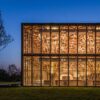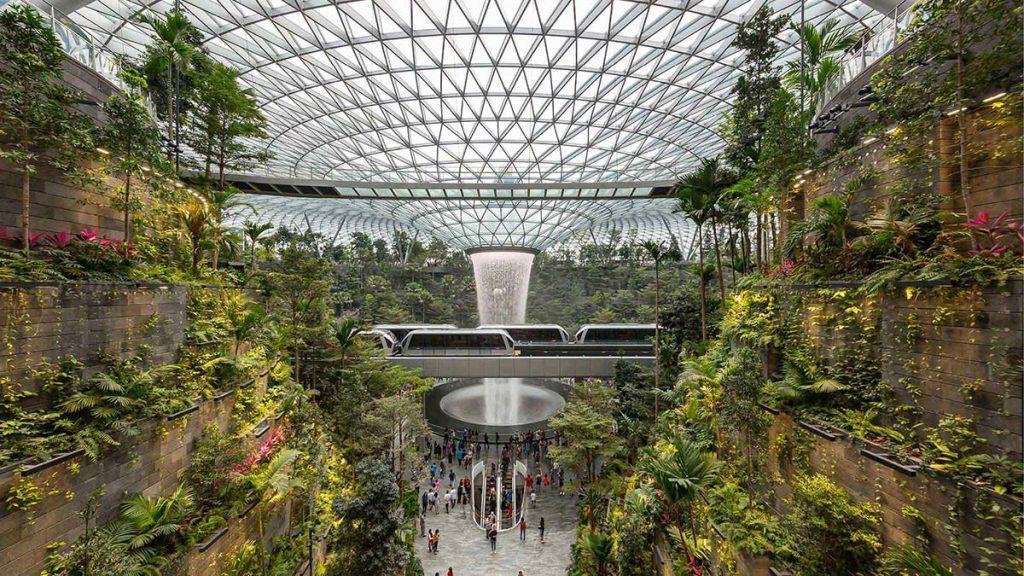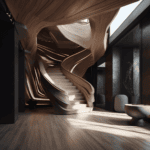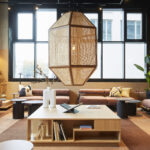Singapore’s Changi Airport is unique in the world. In addition to the spectacular domed building with the world’s largest indoor waterfall, a new terminal is now being planned that will turn the airport into a full-fledged city.
It looks like the setting from a science fiction movie. The shuttle train emerges from the densely overgrown slope and passes a gigantic waterfall that flows out of a funnel-shaped opening in the glass dome. Rain Vortex is the name of the world’s largest indoor waterfall, which thunders from a height of 40 meters into an underground basin. A tropical forest grows all around in the so-called Forest Valley, where more than 61,000 trees and shrubs have been planted. Behind the botanical garden is a shopping mall with almost 300 stores and restaurants, and passengers can enjoy a kind of amusement park at the height of the structure.
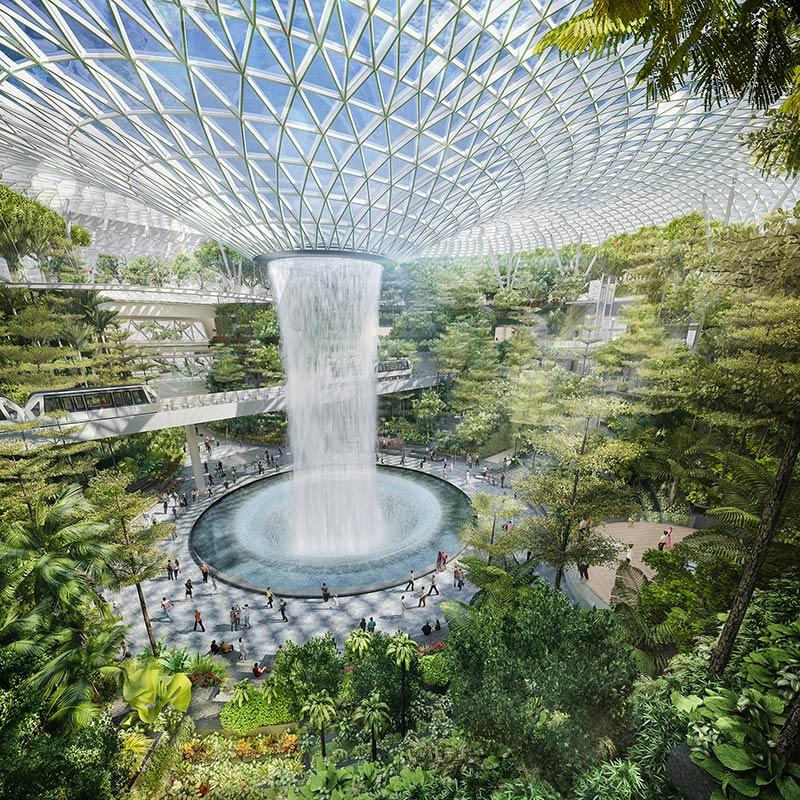
Opened in 2019, architect Moshe Safdie`s domed building has turned Singapore’s airport into a tourist destination. Instead of staring at a screen until their connecting flight, travelers can expect a variety of distractions from the waiting room blandness at Jewel Changi Airport. Some 20 airlines now offer early check-in so that a waterfall or high-bridge selfie can be taken before the flight.
In the beginning was the parking lot
The story of how the domed building came to be sounds anything but exciting. Because the parking capacities for the planned expansion of Terminal 1 were lacking and no large parking garage was to be placed in front of the entrance, it had to be built underground. “A construction project like this is very costly. To make it profitable, a shopping mall should be built above it,” explains Charu Kokate, architect and partner at Safdie Architects. “But with this high density of shopping centers, how do you get people to come here of all places? That made us realize it needed an attraction.”
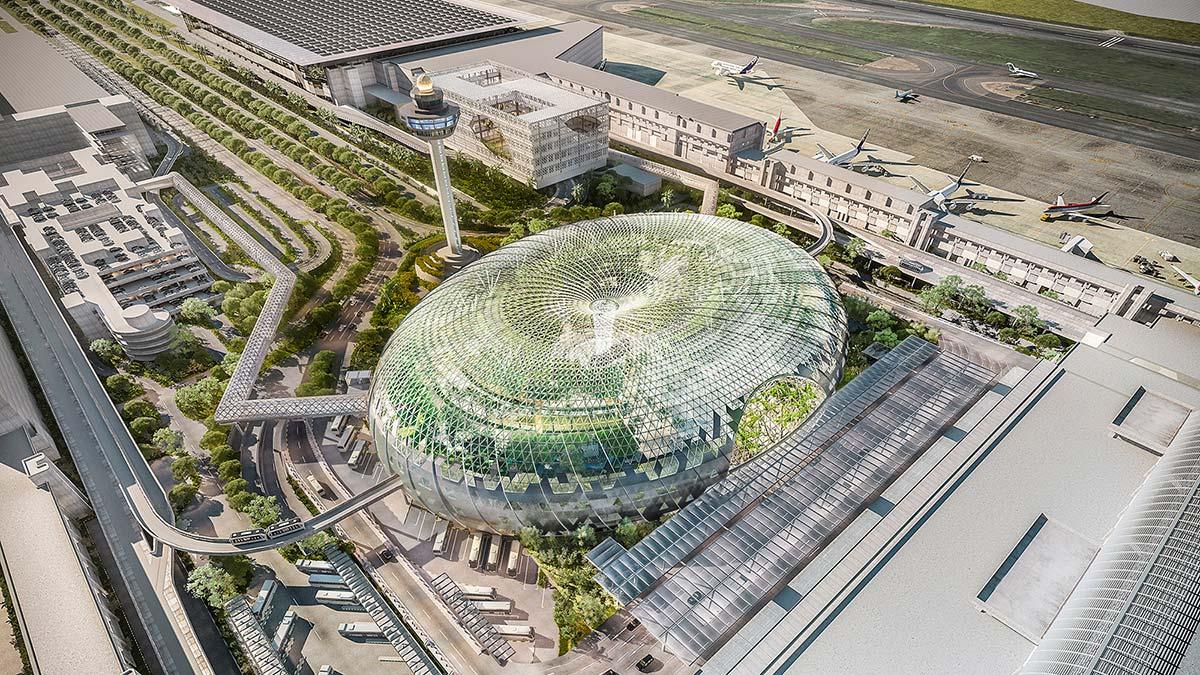
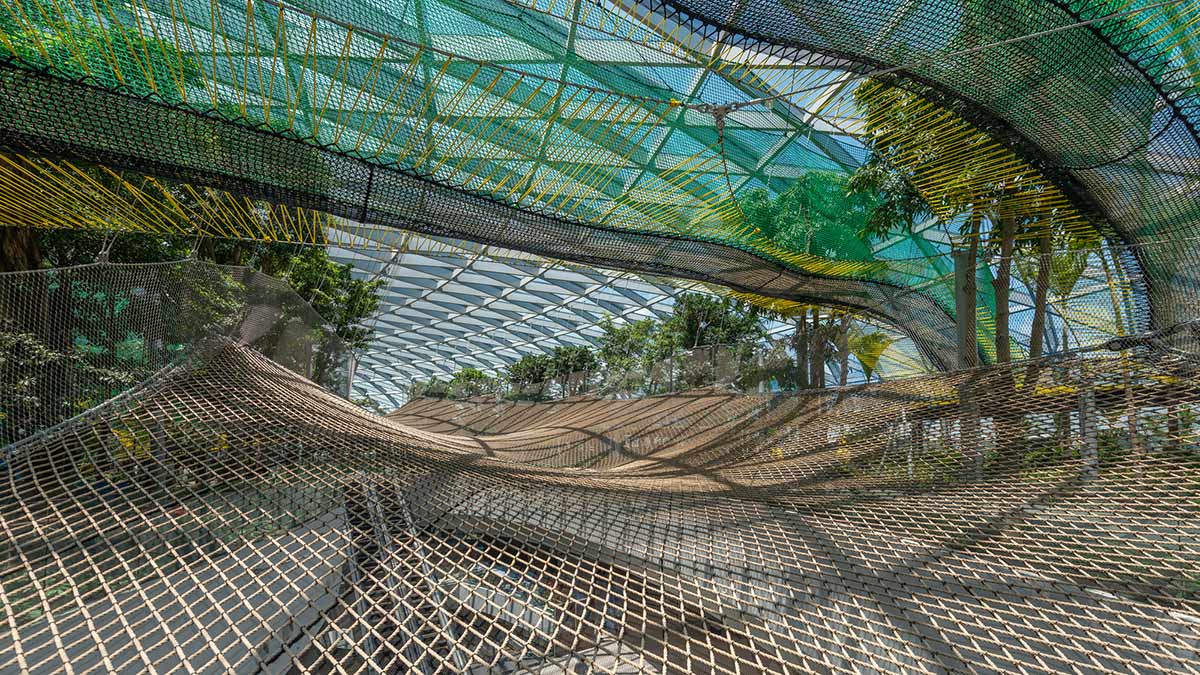
So superlatives were needed to set the consumer machinery in motion and thus secure financing for the entire project. The mix of botanical garden, amusement park and shopping mall certainly seems to be working. Already in the first half of the year, the target of 50 million visitors per year was reached. This should mean that the expensive underground parking spaces will have paid for themselves at some point.
The airport as a city
Now the next airport expansion is already on the horizon, following a similar concept. “The airport as a city” is the guiding principle that has been issued. This time, the designs for the planned Terminal 5 come from the architectural firms Heatherwick Studio and Kohn Pedersen Fox (KPF). It will bring 50 million additional passengers a year and double the airport’s current capacity.
Our intent is to rewrite the definition of what an airport terminal can be.
Thomas Heatherwick, Architect
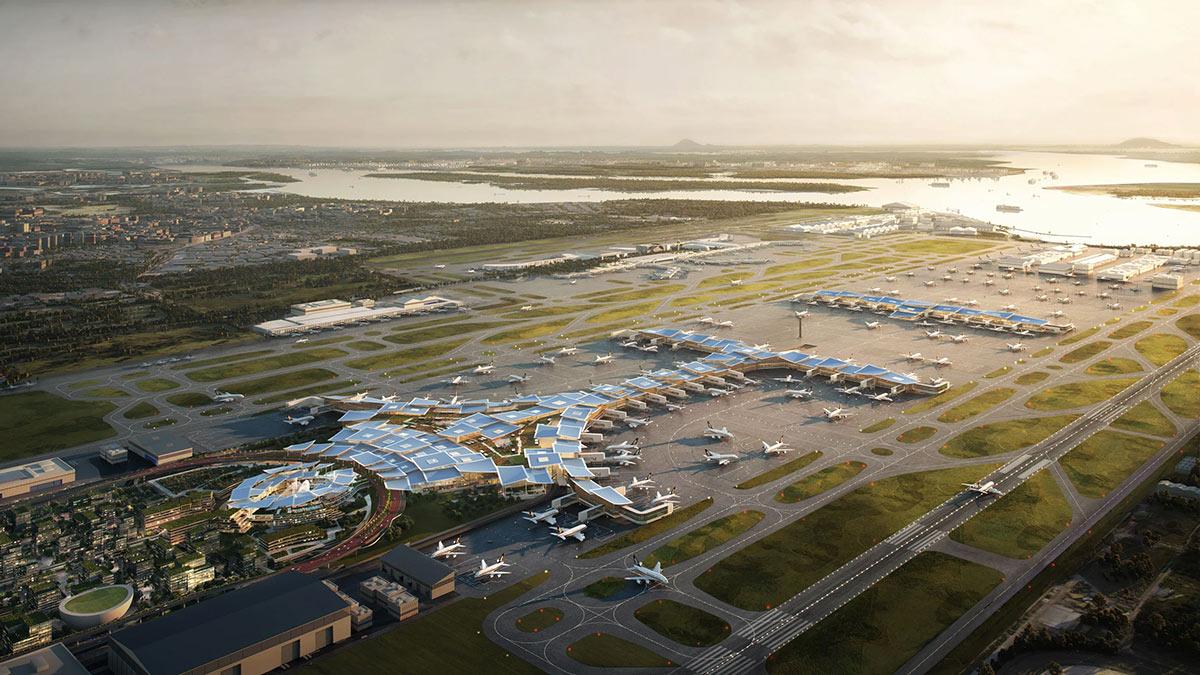
“Most airports don’t have a particular quality of stay, but Changi has always been different,” says architect Thomas Heatherwick. “Our intention is to rewrite the definition of what an airport terminal can be.” Instead of building a single, giant monolith on the outskirts of the city, accessible only to travelers, he says, the idea is to create a social space that is also open to city residents. The architects have not explained how this idea of open space can be reconciled with airport security checks.
Ikonic Architecture
In terms of design, the aim is to create an iconic building that travelers will not soon forget. The first renderings of the new building show a main building and a side wing connected underground. The roof is divided into curved segments and its scale-like structure is reminiscent of Heatherwick’s design for the new Google Campus.
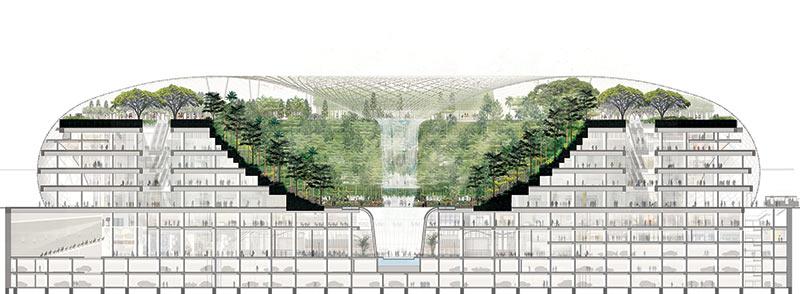
From the air, the area of the new terminal resembles a French garden. The roof of the building ensemble, which reflects the sky, is reminiscent of a chateau fountain. “Our design for Terminal 5 is inspired by Singapore’s unique blend of nature and city,” adds Trent Tesch, KPF’s chief designer.
A business district, the Changi East Urban District, is to be built right next to the terminal. In the rendering, a series of green buildings can be seen at this location. Construction work on the 1,080-hectare site is scheduled to begin in 2024 and be completed by mid-2030.
Text: Gertraud Gerst
Photos and Renderings: Changi Airport Group


